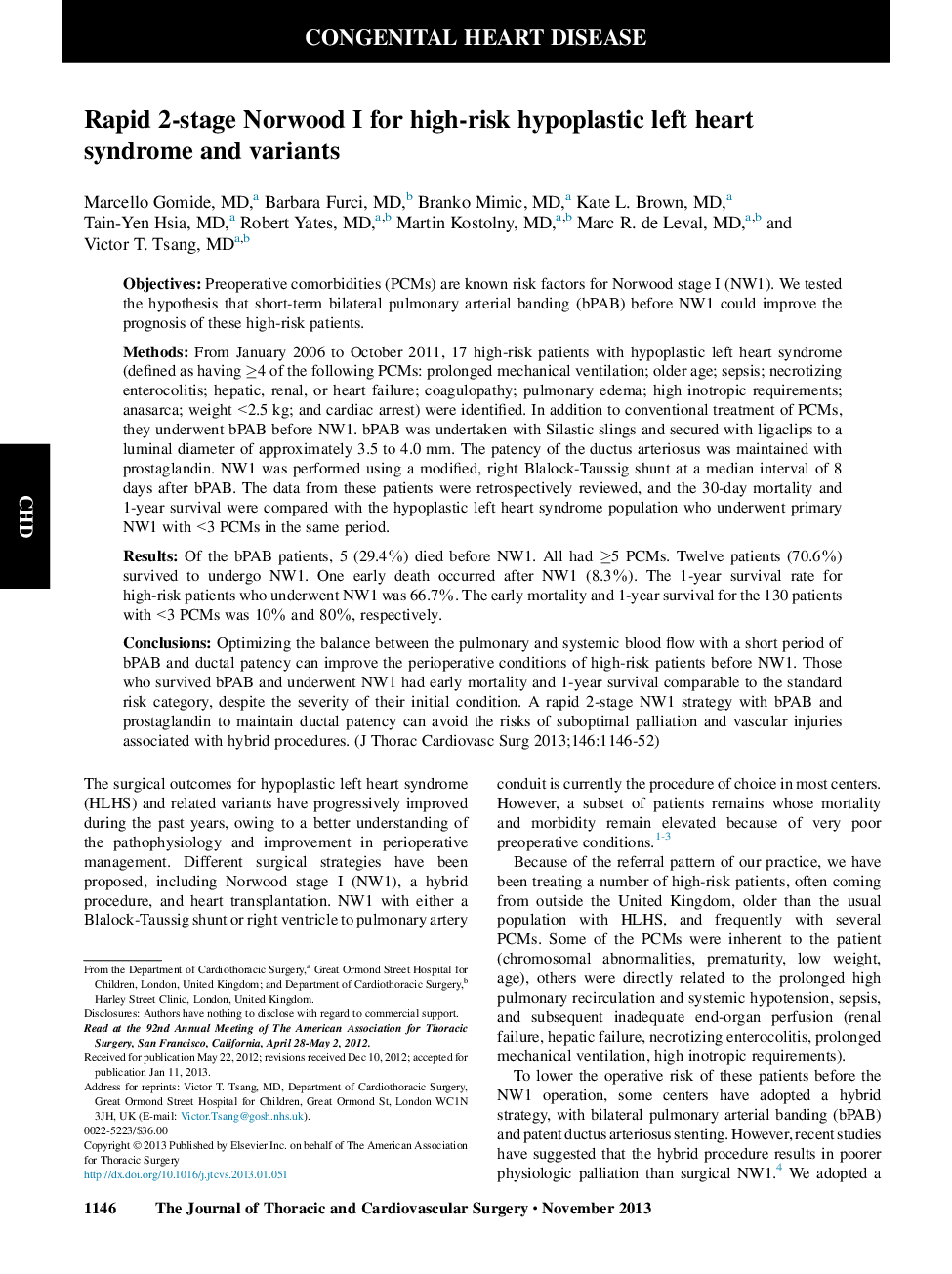| کد مقاله | کد نشریه | سال انتشار | مقاله انگلیسی | نسخه تمام متن |
|---|---|---|---|---|
| 2979839 | 1578617 | 2013 | 7 صفحه PDF | دانلود رایگان |

ObjectivesPreoperative comorbidities (PCMs) are known risk factors for Norwood stage I (NW1). We tested the hypothesis that short-term bilateral pulmonary arterial banding (bPAB) before NW1 could improve the prognosis of these high-risk patients.MethodsFrom January 2006 to October 2011, 17 high-risk patients with hypoplastic left heart syndrome (defined as having ≥4 of the following PCMs: prolonged mechanical ventilation; older age; sepsis; necrotizing enterocolitis; hepatic, renal, or heart failure; coagulopathy; pulmonary edema; high inotropic requirements; anasarca; weight <2.5 kg; and cardiac arrest) were identified. In addition to conventional treatment of PCMs, they underwent bPAB before NW1. bPAB was undertaken with Silastic slings and secured with ligaclips to a luminal diameter of approximately 3.5 to 4.0 mm. The patency of the ductus arteriosus was maintained with prostaglandin. NW1 was performed using a modified, right Blalock-Taussig shunt at a median interval of 8 days after bPAB. The data from these patients were retrospectively reviewed, and the 30-day mortality and 1-year survival were compared with the hypoplastic left heart syndrome population who underwent primary NW1 with <3 PCMs in the same period.ResultsOf the bPAB patients, 5 (29.4%) died before NW1. All had ≥5 PCMs. Twelve patients (70.6%) survived to undergo NW1. One early death occurred after NW1 (8.3%). The 1-year survival rate for high-risk patients who underwent NW1 was 66.7%. The early mortality and 1-year survival for the 130 patients with <3 PCMs was 10% and 80%, respectively.ConclusionsOptimizing the balance between the pulmonary and systemic blood flow with a short period of bPAB and ductal patency can improve the perioperative conditions of high-risk patients before NW1. Those who survived bPAB and underwent NW1 had early mortality and 1-year survival comparable to the standard risk category, despite the severity of their initial condition. A rapid 2-stage NW1 strategy with bPAB and prostaglandin to maintain ductal patency can avoid the risks of suboptimal palliation and vascular injuries associated with hybrid procedures.
Journal: The Journal of Thoracic and Cardiovascular Surgery - Volume 146, Issue 5, November 2013, Pages 1146–1152